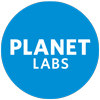People’s Choice Award
Your vote will decide the winner of the 2014 People’s Choice award. Voting will open to the public on or after Friday Sept. 5th, just prior to the conference. Each person will be able to vote for as many maps as they want until the winner is announced at the Gala Night on Thursday, September 11th. The map with the most votes wins.
Judged Awards
Three judges will be choosing a winner for 7 categories including:
- Best open source software integration. Awarded to the map which displays the most innovative and purposeful use of open source software. The map need not be constructed entirely from open source software or, indeed, from a wide variety. Judges will be looking for sound choice, application and innovation.
- Best open source data integration. Awarded to the map which makes the most innovative use of open source data. the map need not use a wide variety of sources or be entirely composed of open data sources but the open source component must be well marshaled, purposeful and a core component of the final map.
- Best static map (digital display). Awarded to the map which, in digital form, presents a well composed static display of a theme of the author’s choice. The map should be complete and function without additional material. This category might also be used for those who wish to submit a digital version of a printed map.
- Best web map application. Awarded to the map which makes the most innovative use of web map application platforms including online or mobile. The map should make use of emerging mapping paradigms including interaction, multiscale and as a portal to further information where appropriate.
- Most unique map. Awarded to, quite simply, the map that judges find to be the most unique in terms of theme, design or function.
- Best overall cartographic display. Awarded to the map that displays the most impressive cartography. This will be a map that goes beyond the basics and exhibits excellence in aspects of cartographic design and production.
- Best anti-map map. Awarded to the map that displays the least map-like form and function yet manages to perfectly capture and communicate the intended geospatial message. This category is intended to encourage diversity in style and approach because not every geospatial theme needs a map…
Judges
Thank you to our three esteemed judges for volunteering to judge this year’s map gallery.
James E. Meacham is a Senior Research Associate and Director of the InfoGraphics Lab in the University of Oregon’s Department of Geography. He received his MA in Geography in 1992 at the UO. He is a past president of NACIS. He is co-author of several atlases including books on Oregon, Yellowstone, and the Mongolian Altai. Jim teaches cartography courses at the UO. His current projects include a new Atlas of Wildlife Migration. Connect @Jim_Meacham
Matthew Hampton has over 16 years experience in design cartography and GIS, Matthew has a B.S. from Lewis & Clark College, and an MS in Geography from PSU. Prior to joining Metro as a cartographer in 1998, Matthew worked as a wilderness guide throughout the mountains and rivers of the Cascades. Connect @cartopdx
Dave Imus founded Imus Geographics in 1983, originally working under contract for street map publishers including Rand McNally. In 2012, his art received considerable recognition when Slate magazine called the The Essential Geography of the USA, “The greatest paper map of the United States you’ll ever see.”






